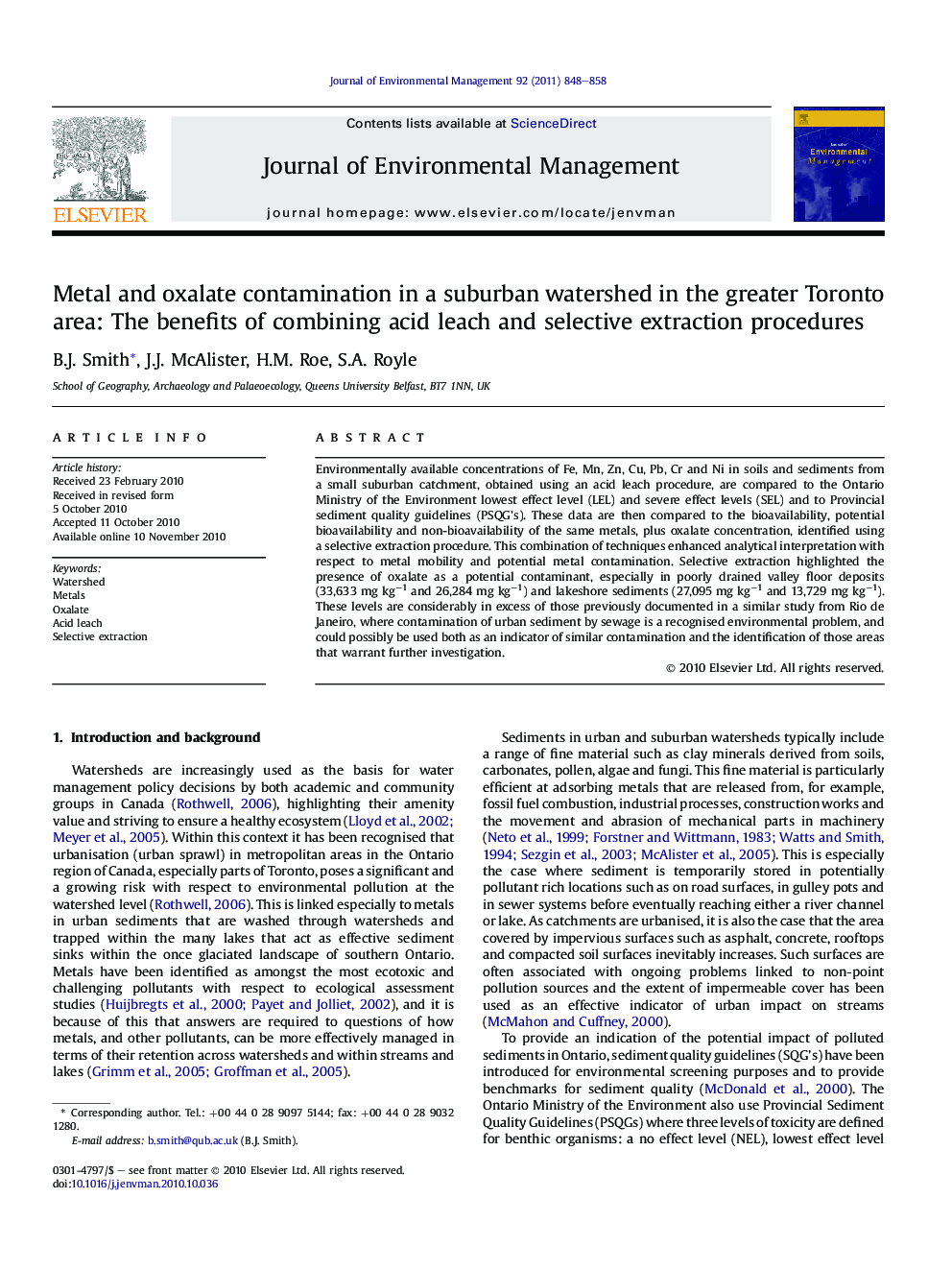| Article ID | Journal | Published Year | Pages | File Type |
|---|---|---|---|---|
| 10505548 | Journal of Environmental Management | 2011 | 11 Pages |
Abstract
Environmentally available concentrations of Fe, Mn, Zn, Cu, Pb, Cr and Ni in soils and sediments from a small suburban catchment, obtained using an acid leach procedure, are compared to the Ontario Ministry of the Environment lowest effect level (LEL) and severe effect levels (SEL) and to Provincial sediment quality guidelines (PSQG's). These data are then compared to the bioavailability, potential bioavailability and non-bioavailability of the same metals, plus oxalate concentration, identified using a selective extraction procedure. This combination of techniques enhanced analytical interpretation with respect to metal mobility and potential metal contamination. Selective extraction highlighted the presence of oxalate as a potential contaminant, especially in poorly drained valley floor deposits (33,633 mg kgâ1 and 26,284 mg kgâ1) and lakeshore sediments (27,095 mg kgâ1 and 13,729 mg kgâ1). These levels are considerably in excess of those previously documented in a similar study from Rio de Janeiro, where contamination of urban sediment by sewage is a recognised environmental problem, and could possibly be used both as an indicator of similar contamination and the identification of those areas that warrant further investigation.
Related Topics
Physical Sciences and Engineering
Energy
Renewable Energy, Sustainability and the Environment
Authors
B.J. Smith, J.J. McAlister, H.M. Roe, S.A. Royle,
